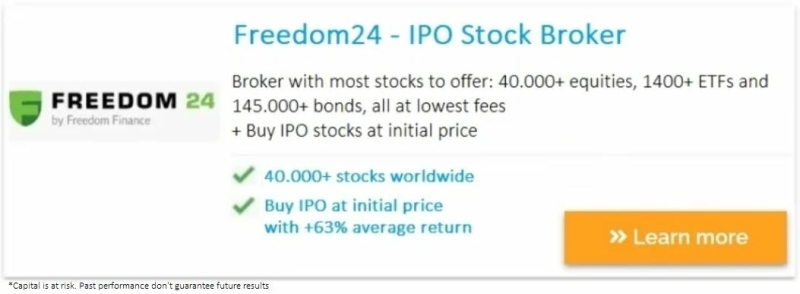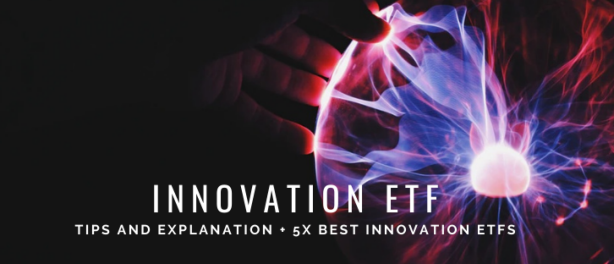Dear Happy Investor, among ETF investors there is sometimes confusion as to what a physical ETF is. In this article you will find an explanation of physical ETFs and the pros and cons of investing in this type of asset. We also discuss the differences between physical vs. synthetic exchange-traded funds. Finally, we'll look at the potential opportunities and associated risks.
Let's get started right away!
What is a Physical Exchange-Traded Fund?

A physical ETF is an exchange-traded fund (ETF) that truly owns the underlying assets (e.g., stocks and bonds) that it tracks. In other words, it's a fund that invests in real assets and not derivatives. For example, if you buy shares of a gold ETF, your investment will include shares of gold bars. This means that you own an asset that you could sell in order to get money back out of your investment.
The ETF buys all of the stocks in the underlying index in proportion to how much weight they have in the index. So, the ETF is a physical copy of the index because it has all of the parts of the index.
If the index changes, for example, because of index adjustments or capital actions of the securities it represents, the ETF copies these changes. This means that trades need to be made on a regular basis. The ETF gives out money regularly, in the form of dividends or coupons.
Differences between synthetic vs physical ETF
A physical ETF copies the performance of an index by holding some or all of the index's components. A synthetic ETF, on the other hand, uses swap agreements to copy the performance of the index.
This usually means that the synthetic ETFs hold a basket of securities that may or may not be related to the index they track. And what they do is use a swap contract with a counterparty, which is usually an investment bank, to trade the performance of this basket for the performance of the index.
While physical ETFs trade the index's tangible underlying funds, synthetic ETFs do not own the assets and instead rely on financial derivatives to accomplish the same outcomes.
Trading volumes for physical ETFs are often greater than for synthetic ETFs.
A financial firm creates synthetic ETFs by using derivatives to duplicate the performance of an index. Physical exchange-traded funds (ETFs) are based on real assets such as company shares or gold bars.
Synthetic ETFs may be more tax efficient than physical ETFs, but because they don't own any assets, their performance may not be as closely related to the underlying asset's actual value.
Investors can use synthetic ETFs to get exposure to markets that are hard to get into in other ways. They can be helpful when the investment they are based on is expensive to buy, hold, and sell.
But investors need to fully understand how they work and know that rewards and risks are always in balance.
Physical ETF’s pros and cons
Let us have closer look at the pros and cons of physical ETF’s.
Pros
- They are more liquid than synthetic ETFs because they trade like stocks do on an exchange rather than as a fixed share class within an existing mutual fund or similar structure. This means that you can sell your shares at any time during market hours without needing permission from anyone else (or even waiting for them to agree).
- Physical ETF’s are generally more transparent than their synthetic counterparts because they disclose exactly what investments go into each fund – whereas some synthetics may not disclose all its holdings until after you have bought shares in it
- Physical ETF's are backed by real assets, which means that they can be sold at any time for cash. This makes them an attractive investment for investors who want to build wealth over time
- Physical ETFs are less sensitive to market fluctuations than other types of investments that use leverage
Cons
- The fact that the performance of the underlying shares or other assets that the investment is seeking to replicate might fluctuate continuously is the primary investment risk associated with physical exchange-traded funds (ETFs).
- Physical ETF's can be more expensive than Synthetic counterparts or index funds because they have higher transaction costs associated with them.
- For some ETFs that hold hundreds or thousands or securities, physical replication may not be the best approach. The trading costs of buying 1,000 or more securities might have a negative impact on the ETF.
- In some markets where there are foreign ownership restrictions or less liquid securities (like some emerging markets, or portions of the bond markets) there may not be the inventory available to meet demand for the ETF.
- Physical ETFs don't allow investors to take advantage of short-term fluctuations in market prices. This can cause delays in getting invested in the market, which could impact an investment strategy.
- Physical ETF’s are not as flexible as synthetic ETF’s when it comes to short selling because there is no way for investors to short sell a physical product (i.e., sell something that one does not own).
- A physical replication requires buying and selling the components of that index; it is a labor-intensive process and, depending on the quality of the ETF, may be prone to tracking error.
- If the ETF provider engages in securities lending, then physical exchange-traded funds (ETFs) have the potential to be exposed to a risk known as "counterparty risk."
Why should we invest in physical ETF’s? The opportunities

The most common way for an ETF to copy an index is by physical "replica." It gives the investor peace of mind knowing that he owns the stocks or bonds on which the ETF is based. The biggest advantage to physical ETFs is that as a novice investor, you can quickly and easily achieve a large diversification among stocks and other assets. You can diversify your portfolio by investing in different sectors and assets such as metals, real estate, precious metals and other tangible assets like oil or gold. If this is new to you, you can read this article on ETF investing.
Most ETFs are physical, but their content can be very different in terms of risk. There are very high-risk themed ETFs that focus purely on growth stocks or commodity stocks. And there are global and/or dividend ETFs that focus on lower-risk assets. Therefore, as a beginner, you need to have a good understanding of what a physical ETF really is based on risk.
Another advantage is that they are more accessible than mutual funds: you do not need to have a high income or large capital to invest in them, as there are no minimum investment requirements.
In the event that the ETF is not successful, the assets created to monitor the index will be transferred to the investor as their personal property. People seem to be more inclined to invest in physically covered ETFs when faced with a circumstance like this.
Why should we not invest in physical ETF’s? The risks
The biggest risk of physical ETFs is that they can realize substantial price losses. This is no different than any other asset. It is important to understand that even an ETF can give losses in the long run. It is not a guarantee of success! Therefore, immerse yourself in the best ETFs that match your risk profile.
In addition, there are other risks to not investing in physical ETFs:
- Physical ETFs run the risk that they will not always track the underlying asset perfectly due to fees and other factors such as arbitrage prices
- In some cases, fees are slightly higher than synthetic ETFs
- If you buy gold as a physical ETF, there will be a significant amount of gold stored with third parties. This increases exposure to market risk and credit risk (the risk that the counterparty will default on its commitment)
- They may not be able to track their indices accurately enough. There is often a discrepancy between how well a physical ETF performs compared to its underlying index (known as tracking error), which can cause problems for those looking for accurate returns
- Essentially, a physical ETF that makes securities loans runs a counterparty risk similar to that of a synthetic ETF with a well-diversified panel of counterparties and a conservative approach to collateralization
Another risk is that you miss the opportunity for higher returns. Sounds crazy, but it's true. Physical ETFs offer a lot of risk diversification. There are some big differences in this regard, though. One is that the large, diversified funds do not outperform the market average (because that is its goal). As a result, the experienced investor misses out on opportunities for higher returns, such as by investing in the best stocks (which are logically more risky).
Further Remarks
When the provider buys the underlying assets, he or she can either buy all of them or pick a group of the best ones. Many people say that physical ETFs should be split into two different groups, and that sampling should be different from full replication. The most common and often thought to be the most reliable is full replication.
But it's not always a good idea in big global markets because the cost of doing all the trades for full replication might not be in the best interest of the portfolio. Sampling cuts down on these costs, but because it doesn't track the whole index, it can lead to more tracking errors. Physical ETFs work well in big markets with a lot of money.





![10x Best VanEck ETFs to Buy [2022]](https://media-01.imu.nl/storage/thehappyinvestors.com/4861/responsive/6608497/best-vaneck-etfs-2560x1100_734_315.png)


![3 Sunken ETFs with Potential: Buy the Dip? [2022]](https://media-01.imu.nl/storage/thehappyinvestors.com/4861/responsive/6566186/sunken-etfs-2022-2560x1100_614_264.png)
